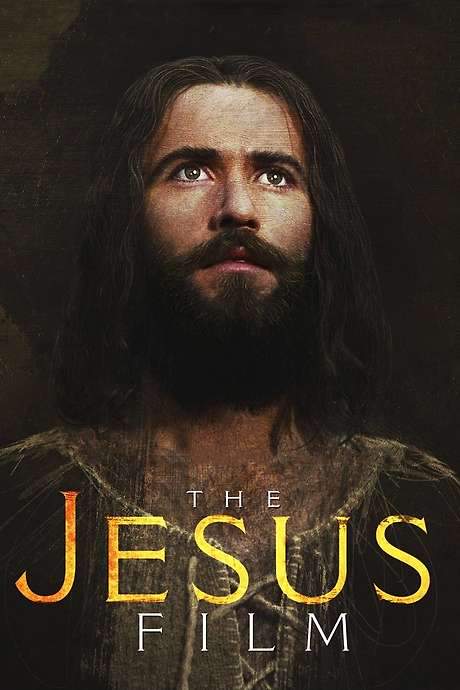Warning: spoilers below!
Haven’t seen The Great Commandment yet? This summary contains major spoilers. Bookmark the page, watch the movie, and come back for the full breakdown. If you're ready, scroll on and relive the story!
The Great Commandment (1939) – Full Plot Summary & Ending Explained
Read the complete plot breakdown of The Great Commandment (1939), including all key story events, major twists, and the ending explained in detail. Discover what really happened—and what it all means.
Joel John Beal is the elder son of the village rabbi Lamech Maurice Moscovitch, raised to follow in his father’s scholarly footsteps as a scribe and rabbi. Yet Joel harbors a secret allegiance to a more active form of resistance, leading a cadre of zealots who believe that faith must be matched with action to free their nation. He is also secretly in love with Tamar Marjorie Cooley, the daughter of the carpet merchant Jemuel Lloyd Corrigan. Joel overhears Lamech discuss Tamar’s marriage to one of his sons, only to learn that the intended groom is his younger brother Zadok Warren McCollum, a bold, impulsive zealot. Joel’s protective instinct for Zadok clashes with his love for Tamar, and with the pressure of temple and tradition bearing down on him, he finds himself torn between family loyalty and a broader cause.
The village’s calm is shattered when a troop of soldiers arrives, led by the centurion Longinus Albert Dekker, accompanied by a tax collector. They demand the collection of a special tax, stirring tension among the townspeople. In response, Zadok and other zealots organize a daring, reckless move—the release of prisoners held by the soldiers—which prompts Longinus to consider a brutal, sweeping punishment for the village. While Zadok urges immediate action against the Romans, Joel senses a different path: he believes that a higher, more substantial resistance requires leadership beyond the sword, and he sets out to seek Jesus, a figure whom many believe could unite and empower their struggle.
Joel’s search brings him to a voice not seen on screen but felt through the film’s imagery: Jesus Christ, represented by the voices of Irving Pichel Irving Pichel and the scene’s reflective depictions. Joel meets Jesus’ disciples, Andrew Harold Minjir and Judas Iscariot Marc Loebell, who hold divergent visions for Jesus’ mission. Andrew leans toward a practical, humane approach, while Judas envisions a political-military leadership that could rally the oppressed. Confronting Jesus with the sword entrusted to the zealots, Joel finds that Jesus resists weaponized revolt, reminding him of a higher law. Jesus declines their call to arms with a principle Joel recognizes but struggles to accept: “all who take up the sword will perish by the sword” (as the story echoes).
Disheartened yet still resolute, Joel returns to his village in time for the wedding of Zadok and Tamar. He hatches a plan to kidnap Jesus and compel His support, hoping to change the tide of their struggle by political means. Yet Jesus arrives at the village gate, where Lamech, now serving as scribe and moral guide, asks Him the essential question: “What is the greatest commandment in the Law?” (the moment drawn from Luke 10:25-37). Jesus answers with the Parable of the Good Samaritan, and his closing exhortation, “Go and do thou likewise,” inspires Joel to abandon the kidnapping plot and to seek a path of compassionate action rather than coercion.
Meanwhile, Zadok, urged on by Nathan the innkeeper Olaf Hytten, learns that Longinus lies vulnerable at the inn. He abandons his wedding plans to strike a final blow, but Longinus’s forces counter, and Zadok is killed in the ensuing confrontation. Joel, moved by Jesus’ teaching, chooses mercy over vengeance and positions himself as a protector rather than a killer—an act that brings him into direct conflict with the village mob.
Longinus, recognizing Joel’s shift in motive, orders his soldiers to arrest the young man and take him to prison in Jerusalem. There, Joel misses the Passion, a sorrowful consequence of the power struggle that has torn his world apart. Tamar visits him in confinement, offering the human connection that seeded his initial doubt about force. In a twist that binds the narrative to its central miracle, Longinus reveals a personal witness to Jesus’ crucifixion: he was the soldier who thrust the spear into Jesus’ side to ensure He was dead. This revelation reframes Joel’s understanding of power, mercy, and faith. Longinus throws down the spear, and together with Joel and Tamar, returns to the village to bear witness to the Christian faith they have come to share.
In the end, the story reframes resistance as a journey from zealotry to mercy, from political theater to spiritual witness, with the three unlikely travelers—Joel [John Beal], Tamar [Marjorie Cooley], and Longinus [Albert Dekker]—finding a path that honors both love and humanity. The film’s quiet, contemplative tone leaves the audience with a meditation on the cost of violence and the possibility of faith transcending conflict, set against a world where the figure of Jesus [Irving Pichel] remains ever-present as a call to compassion, not conquest.
Last Updated: October 07, 2025 at 09:40
Unlock the Full Story of The Great Commandment
Don't stop at just watching — explore The Great Commandment in full detail. From the complete plot summary and scene-by-scene timeline to character breakdowns, thematic analysis, and a deep dive into the ending — every page helps you truly understand what The Great Commandment is all about. Plus, discover what's next after the movie.
The Great Commandment Timeline
Track the full timeline of The Great Commandment with every major event arranged chronologically. Perfect for decoding non-linear storytelling, flashbacks, or parallel narratives with a clear scene-by-scene breakdown.

Similar Movies to The Great Commandment
Discover movies like The Great Commandment that share similar genres, themes, and storytelling elements. Whether you’re drawn to the atmosphere, character arcs, or plot structure, these curated recommendations will help you explore more films you’ll love.
Explore More About Movie The Great Commandment
The Great Commandment (1939) Scene-by-Scene Movie Timeline
The Great Commandment (1939) Movie Characters, Themes & Settings
The Great Commandment (1939) Spoiler-Free Summary & Key Flow
Movies Like The Great Commandment – Similar Titles You’ll Enjoy
The Gospel (2005) Full Summary & Key Details
Son of God (2014) Full Summary & Key Details
From the Manger to the Cross (1912) Full Movie Breakdown
The King of Kings (1927) Ending Explained & Film Insights
The Gospel According to St. Matthew (1964) Story Summary & Characters
The Ten Commandments (1923) Full Summary & Key Details
Ben-Hur: A Tale of the Christ (1925) Movie Recap & Themes
The Greatest Story Ever Told (1965) Full Summary & Key Details
Jesus (1979) Detailed Story Recap
Jesus of Nazareth (1000) Detailed Story Recap
Jesus of Nazareth (1942) Full Movie Breakdown
The Robe (1953) Story Summary & Characters
The Martyr of Calvary (1952) Film Overview & Timeline
Pontius Pilate (1962) Ending Explained & Film Insights
The Visual Bible: Matthew (1993) Spoiler-Packed Plot Recap


















